Inspired by Victor Vasarely, students will use shapes and lines to create an illusion of a 3-dimensional drawing in the Op Art style. Recommended for 1st Graders.
Line: a mark between two points. Lines can be thin, thick, dotted, dashed or have other qualities. In this lesson straight lines (vertical, horizontal and diagonal) are used.
Shape: a 2-dimensional (flat) area enclosed by a line, either geometric or organic. In this lesson geometric shapes are used. a closed line. Shapes can be geometric or organic. They are flat, express length and width.
Pattern: element(s) repeated in a regular arrangement.
2- Dimensional (2D): having width and height but no thickness (depth).
3- Dimensional (3D): having actual height, width and depth and existing in space or having the illusion of existing in three dimensions.
Background: the part of the picture that is overlapped by the shapes, where the vertical lines will be drawn.
Optical Illusion: a visual image that appears different from how it appears in reality.
Parallel Lines: two lines which are the same distance apart, like train tracks.
Repetition: when an element is used multiple times.
Variation: in which different qualities of an art element are used. Variation adds interest and break the monotony of simple repetition. Too much variety creates confusion. Various shapes, line lengths and contrasting colors of black and white provide variety.
Op Art is short for ‘optical art’. The word optical describes how our eyes see. Op Art is a form of abstract art that uses shape, line, color and pattern to create an illusion of movement, hidden imagery, vibrating patterns, or warping shapes.
Victor Vasarely (1906-1997) was a Hungarian-French artist who was one of the leaders of the Op Art Movement which emerged in the 1960’s. He developed his style of geometric abstract art in both color and black and white in 2-dimensional media, primarily paintings. This lesson will explore art elements used in Op Art using Vasarely’s 1964 painting Naissance K (center image) as inspiration. When the camera came into use, artists felt freer to experiment, rather than always accurately representing what they saw. In this style, artists enjoyed playing with the viewer’s perception.
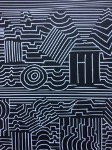
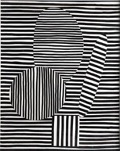
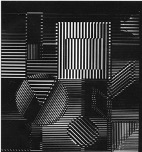
Pre-cut 3-6 different shapes for students in various sizes out of cardstock paper so that students can use them as stencils. Shapes should be small enough to fit multiple on your half page of paper.
Create a poster with the shapes labeled with correct geometric names:
Write the vocabulary you will use on the board and refer to it during the lesson.


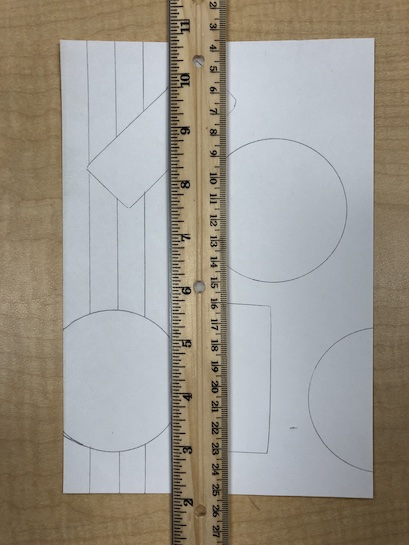


Examples:
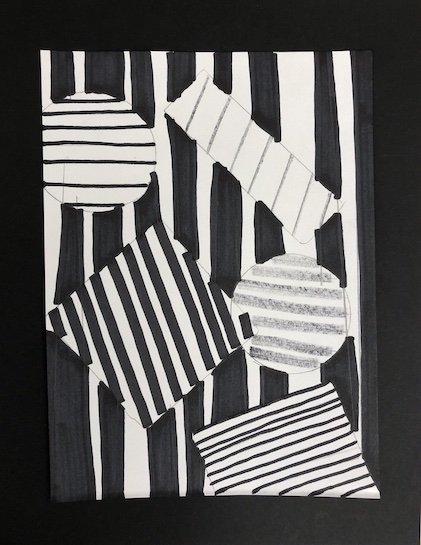
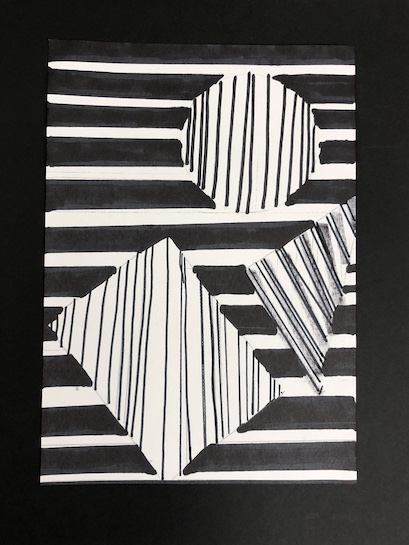
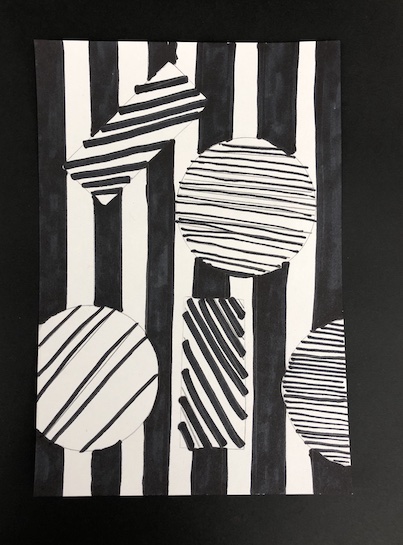
Lesson written by Cameron C. Kim. Tate Op Art website: www.tate.org.uk/kids/explore/what-is/op-art.
Artsy website artist bio: www.artsy.net/artist/victor-vasarely.
21st Century Thinking Skills
Observing, making connections, sequencing, comparing/contrasting, finding evidence, decision making, evaluating.
WA State Learning Standards
(VA:Cr1.2.1) a. Use observation and investigation in preparation for making a work of art.
(VA:Cr2.1.1) a. Explore uses of materials and tools to create works of art or design.
(VA:Cr2.2.1) a. Demonstrate safe and proper procedures for using materials, tools, and equipment while making art.
(VA:Cr3.1.1) a. Use art vocabulary to describe choices while creating art.
(VA:Re8.1.1) a. Interpret art by categorizing subject matter and identifying the characteristics of form.
(VA:Cn11.1.1) a. Understand that people from different places and times have made art for a variety of reasons.
Arts Integration Opportunities
Math: geometric shapes and their counterparts in form.
Please note: These lesson plans are intended for non-profit use only. Use of these plans for commercial purposes should give attribution to the Issaquah Schools Foundation and be accompanied by a nominal donation at www.isfdn.org/donate. Thank you.
Fueling Success for Every Student, Every School